Wildlife Sanctuaries in Uttar Pradesh
Nestled in the heart of Uttar Pradesh lies a pristine haven for wildlife enthusiasts and nature lovers alike. This sanctuary, a treasure trove of biodiversity, offers a mesmerizing tapestry of flora and fauna against the backdrop of sprawling landscapes.
Home to a rich variety of indigenous species, including majestic tigers, graceful deer, and vibrant birdlife, it promises an unforgettable experience for visitors seeking solace in the embrace of nature. With its lush greenery, winding trails, and captivating sightings, this sanctuary invites travelers to embark on an immersive journey, connecting with the untamed beauty of the wild in Uttar Pradesh’s serene sanctuary.
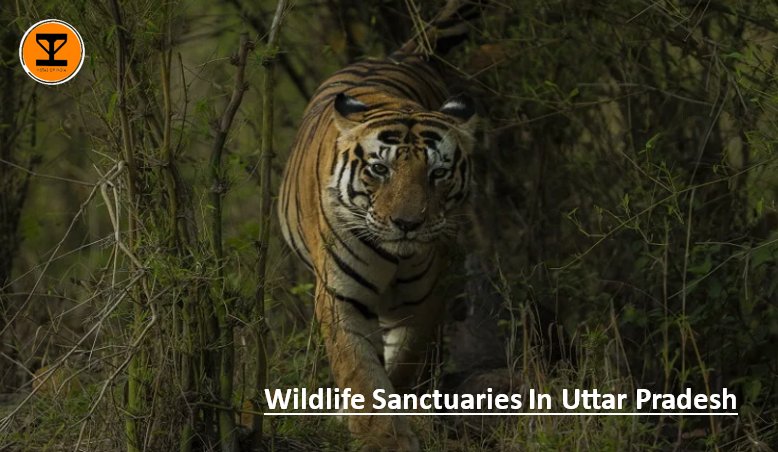
- Suhelwa Wildlife Sanctuary
- Kishanpur Wildlife Sanctuary
- Hastinapur Wildlife Sanctuary
- Mahavir Swami Sanctuary
- Kaimur Wildlife Sanctuary
- Bakhira Wildlife Sanctuary
- Surha Taal Wildlife Sanctuary
- Sohagibarwa Wildlife Sanctuary
- Kachhua Sanctuary
- Parvati Arga Sanctuary
- Chandra Prabha Wildlife Sanctuary
- Ranipur Wildlife Sanctuary
- National Chambal Sanctuary
- Katarniyaghat Wildlife Sanctuary
1. Suhelwa Wildlife Sanctuary
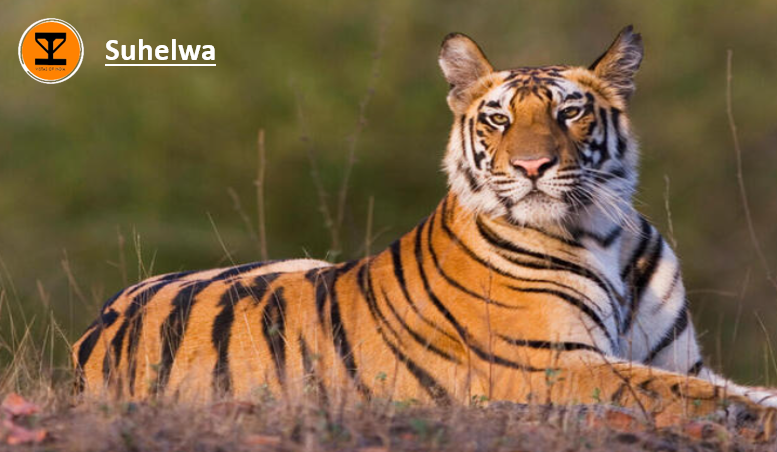
Located in the districts of Shravasti, Balrampur, and Gonda, the Suhelwa Wildlife Sanctuary in UP was established in 1988. Covering an area of 452 square kilometers, the sanctuary showcases a vibrant landscape filled with Sal, Sheesham, Khair, Teak, and various other tree species.
Home to a wide range of wildlife including leopards, tigers, bears, wildcats, wild boars, and a plethora of bird species, the sanctuary is situated along the Indo-Nepal International Border. Known for its diverse flora and fauna, as well as its picturesque surroundings, the sanctuary was originally known as Sohelwa Wildlife Sanctuary before being renamed Soheldeo Wildlife Sanctuary in honor of King Soheldeo.
2. Kishanpur Wildlife Sanctuary
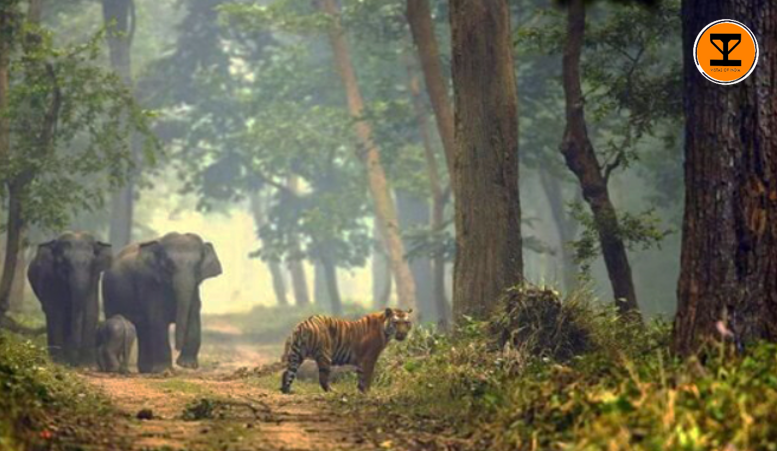
The Kishanpur Wildlife Sanctuary is located near Mailani, Uttar Pradesh, within the Dudhwa Tiger Reserve. It is just 13 km away from Bhira town in Lakhimpur Kheri District. This sanctuary covers a compact area of 200 sq km and has been a part of the Dudhwa Tiger Reserve since 1972.
It consists of 227 sq km of terai forest and meadows. The sanctuary is home to a diverse range of wildlife, including tigers, leopards, pythons, barking deer, gharials, wild boars, and swamp deer. It is adjacent to Dudhwa National Park and boasts riparian forests, dense vegetation, and a wide variety of resident and migratory bird species.
For wildlife enthusiasts, it is a true haven. Although spotting tigers may require some patience, the sanctuary provides an opportunity to witness these magnificent creatures in their natural habitat.
3. Hastinapur Wildlife Sanctuary
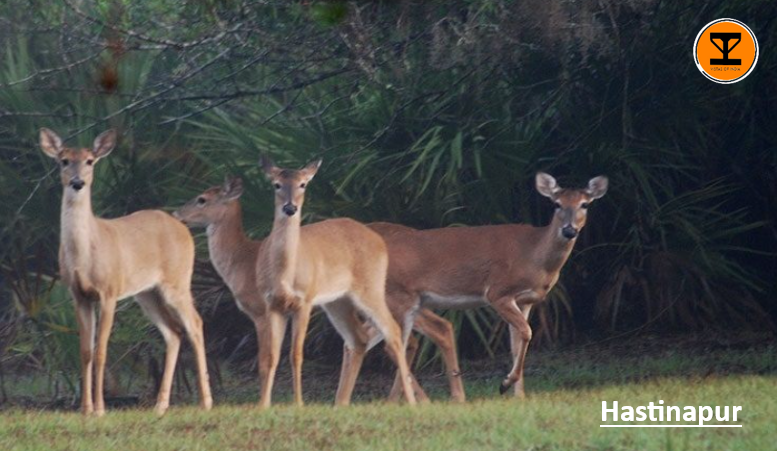
The Hastinapur Wildlife Sanctuary in Uttar Pradesh is located along the northern banks of the Ganges River and covers Muzzafarnagar, Bijnore, Hapur, and Amroha districts. The sanctuary boasts a variety of landscapes, from dense forests to vast grasslands, and is home to the state’s Swamp Deer, Hog Deer, Cheetal, Sambar, and the iconic Saaras (Crane).
The diverse wildlife includes pythons, crocodiles, otters, and various fish species. Conservation efforts such as Crocodile Breeding Projects and Turtle Rehabilitation are supported here. Additionally, the sanctuary serves as an important stop for migratory birds participating in the “Asia Flyway” initiative, while leopards can be found thriving in Meerut district, indicating a healthy ecosystem.
4. Mahavir Swami Sanctuary
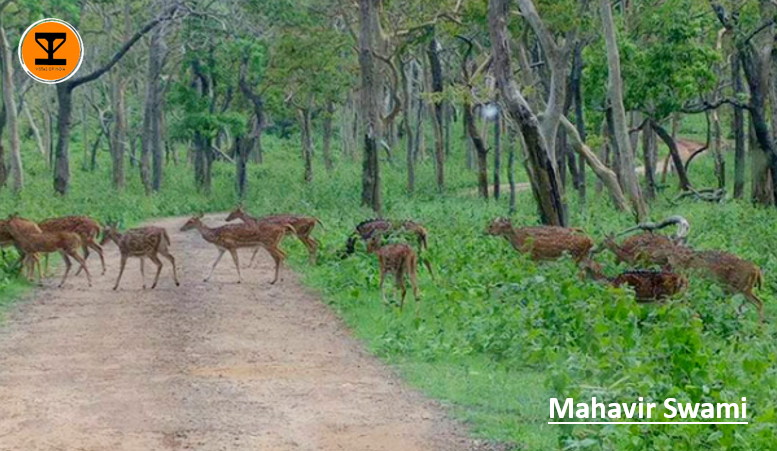
The Mahavir Swami Sanctuary, situated 125 km away from Jhansi in Uttar Pradesh, is a gateway to the Bundelkhand region, famous for its connection with Rani Laxmi Bai. Covering an area of 5.4 square kilometers, this sanctuary is home to a wide variety of wildlife, including leopards, nilgai, wild boars, sambhar, black bucks, blue bulls, bears, jackals, langurs, and monkeys.
It also boasts a diverse range of bird species. The best time to visit this sanctuary is from November to April, and you can stay at a forest rest house. Located in Devgar, 33 km away from Lalitpur District Headquarters, the Mahaveer Swami Wildlife Sanctuary can be easily accessed by road and rail.
5. Kaimur Wildlife Sanctuary
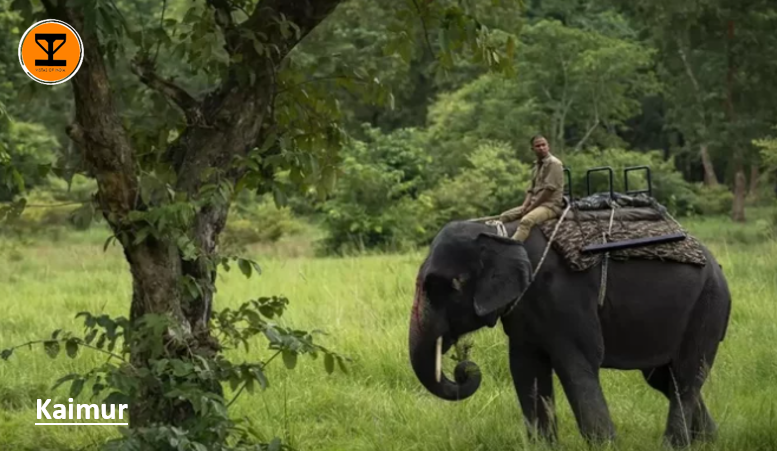
The Kaimur Wildlife Sanctuary, located in the famous Kaimur Hills range, is the largest sanctuary in Uttar Pradesh, covering around 1342 square kilometers. This sanctuary is known for its stunning valleys that are adorned with beautiful waterfalls such as Karkat Waterfall and Telhar. It also holds great historical importance with ancient cave paintings and is home to the oldest Fossil Park.
The sanctuary is teeming with a diverse range of wildlife including Tigers, Leopards, Wild Boars, Sloth Bears, Sambar Deer, Chitals, Four-Horned Antelopes, Nilgais, and over 70 species of resident birds. During the winter migratory season from Central Asia, the sanctuary experiences an increased presence of avian species, making it a birdwatcher’s paradise.
6. Bakhira Wildlife Sanctuary
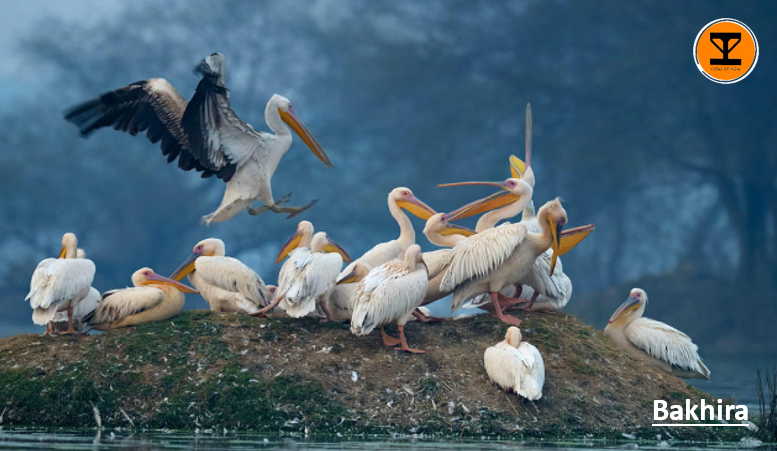
In 1990, the Uttar Pradesh Forest and Wildlife Department designated Bakhira Wildlife Sanctuary, also known as Bakhira Tal, as a Bird Sanctuary. Situated on the west side of the Rapti riverbank, this shallow-water wetland covers 29 sq. km and is the largest natural wetland in Eastern U.P. It is home to a wide variety of migratory and resident birds, with around 40,000 birds from 30 different species visiting during the winter months.
7. Surha Taal Wildlife Sanctuary
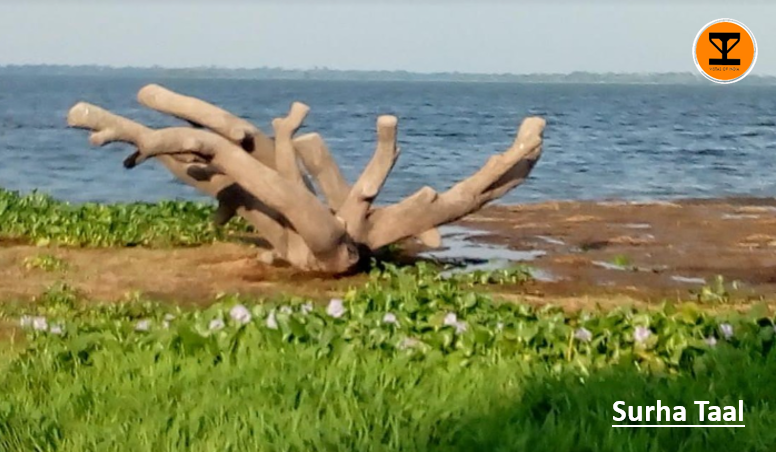
Surha Taal Wildlife Sanctuary, located near the village of Rajpur in Ballia district, is a beautiful natural lake that spans across 1,528 hectares. It is surrounded by lush agricultural fields and is home to the dominant weed, Eichhornia crassipes, which can be found both within the lake and along its edges.
This sanctuary plays a crucial role in providing a habitat for a wide variety of migratory and resident bird species. It has been classified as a high-priority Level V wetland due to its significant ecological and socio-economic value.
The local fishermen often visit this area, and the lake water is used for irrigation purposes. Additionally, the wetland vegetation serves as a valuable source of fodder and fuel for domestic livestock.
8. Sohagibarwa Wildlife Sanctuary
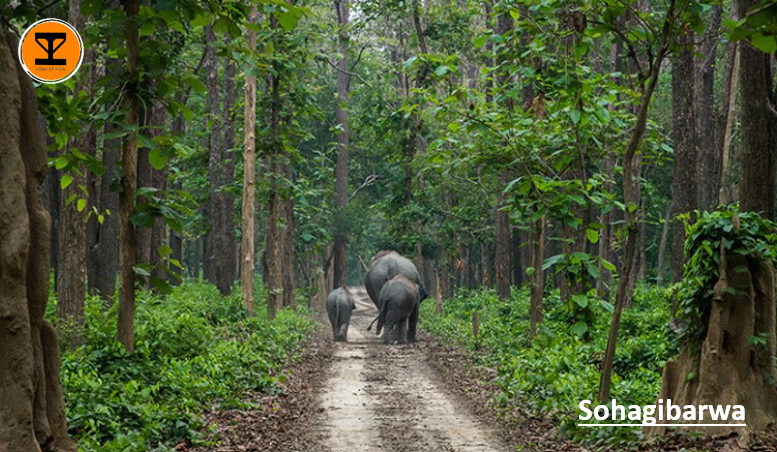
Sohagibarwa Wildlife Sanctuary in Uttar Pradesh was established back in 1987 and can be found in the peaceful Maharajganj district. It is situated around 56 km away from Gorakhpur and 50 km from Maharajganj.
The sanctuary shares its northern border with the international Indo-Nepal boundary and the eastern border with the Uttar Pradesh-Bihar interstate boundary. Sohagibarwa is famous for its calm atmosphere and stunning landscapes, providing a home for a variety of wildlife, such as tigers, leopards, cheetals, bears, wildcats, wild boars, and pythons.
9. Kachhua Sanctuary

The Kachhua Sanctuary, located in the Varanasi district of Uttar Pradesh, India, is a haven for various aquatic animals like turtles and the Ganges dolphin. It was officially recognized as a Turtle Sanctuary on December 21, 1989.
In an effort to address the issue of biological pollution in the River Ganges, the Indian government launched the Ganga Action Plan Phase I in 1986. As part of this initiative, a turtle breeding program was established in Sarnath, where turtles are bred and then released into the river to help purify it from contaminants.
Approximately 2,000 turtles are set free each year, with a grand total of 33,356 turtles released between 1987 and 2010. The Kachhua Sanctuary, which stretches over seven kilometers from Rajghat to Ramnagar Fort, was designated as a Wildlife Protection Zone to protect these turtles and their natural habitat.
10. Parvati Arga Sanctuary
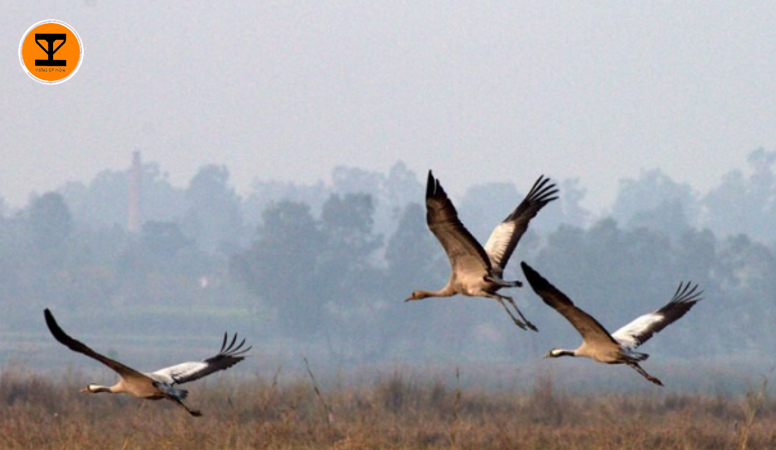
The Parvati Arga Bird Sanctuary, situated near Gonda district in Uttar Pradesh, consists of two interconnected rain-fed lakes, Parvati and Arga, covering an area of 1,084 hectares. This sanctuary was established in 1997 and is nestled in a natural depression within the Gangetic plains of the terai region.
It is conveniently located 22 kilometers from Faizabad’s Ajodhya and 45 kilometers from Gonda city. The sanctuary serves as a crucial habitat for both resident and migratory birds, providing a sustainable environment throughout the year. With 153 species from 33 families documented, the sanctuary is home to a diverse avian population.
It is also a promising destination for ecotourism, promoting bird conservation awareness and educational initiatives. The Parvati Arga wetland falls under the jurisdiction of the Sohelwa Wildlife Division, which is headquartered in Balrampur. The sanctuary maintains consistent water levels, with certain areas reaching depths of up to 20 meters.
11. Chandra Prabha Wildlife Sanctuary

The Chandra Prabha Wildlife Sanctuary, situated in the Chandauli district of Uttar Pradesh and under the Kashi Wildlife Division, was founded in 1957 to protect wildlife from the threats posed by human activities, industrial development, and population growth. Encompassing 9600 hectares, it is supported by a 66000-hectare buffer zone within the Kashi Forest Division to mitigate these challenges.
This sanctuary provides a natural habitat for both local and migratory animals, featuring grasslands, caves, and waterfalls in the Vindhyachal range. Notably, it has contributed to the conservation of Asiatic Lions, with a male lion named Raja and two females named Rani and Jayshree, brought from the Gir Wildlife Sanctuary in Gujarat in 1957.
12. Ranipur Wildlife Sanctuary
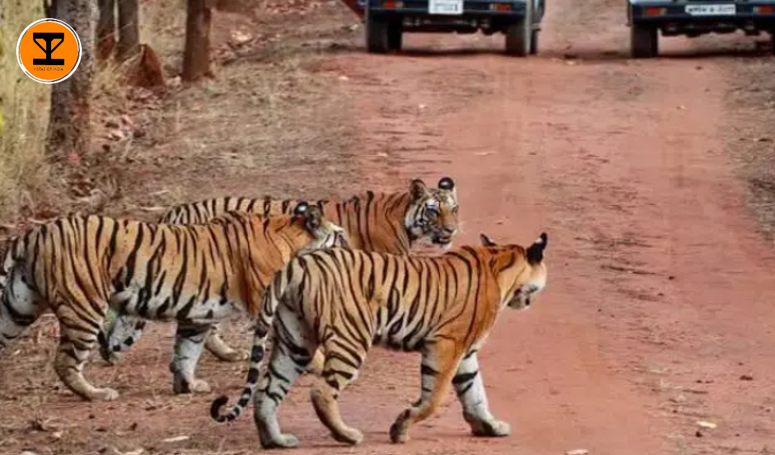
The Ranipur Wildlife Sanctuary, located in Chitrakoot District with its divisional headquarters at Mirzapur, covers a vast area of 3369.47 sq. m. This sanctuary is easily accessible by both road and rail, with the nearest railway station being Manikpur on the Bombay Howrah train route.
If you’re traveling by road, you can reach the sanctuary from Delhi and Allahabad, which are 120 km and 731 km away respectively. The closest airport to the sanctuary is Bamrouly. Within the sanctuary, you’ll find a diverse range of wildlife, including Black Duck, Chinkara, Sambar, Cheetal, Bear, Leopard, Wolf, Wild Dog, and Blue Bull.
13. National Chambal Sanctuary
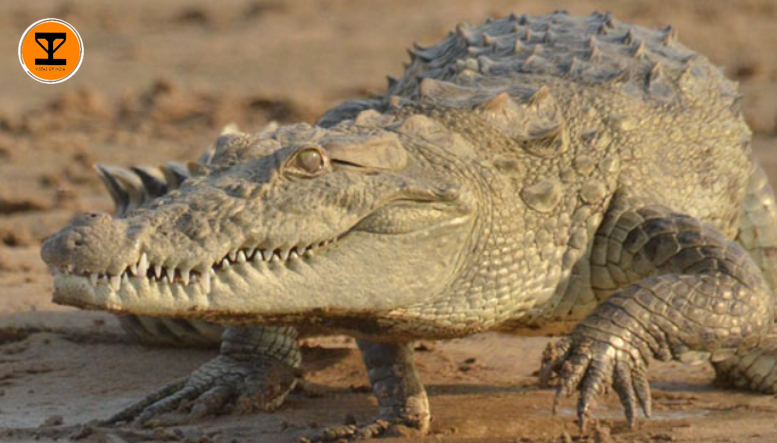
Since its establishment in 1979, the National Chambal Sanctuary has been a haven for wildlife along the Chambal River. This sanctuary, which covers around 425 kilometers, boasts vast ravines that span from 2 to 6 kilometers wide.
Situated at the meeting point of Rajasthan, Madhya Pradesh, and Uttar Pradesh, it holds great significance as an Important Bird Area (IBA) and a proposed Ramsar site. Its conservation efforts are crucial in preserving the rich and diverse ecosystem of the region.
14. Katarniyaghat Wildlife Sanctuary
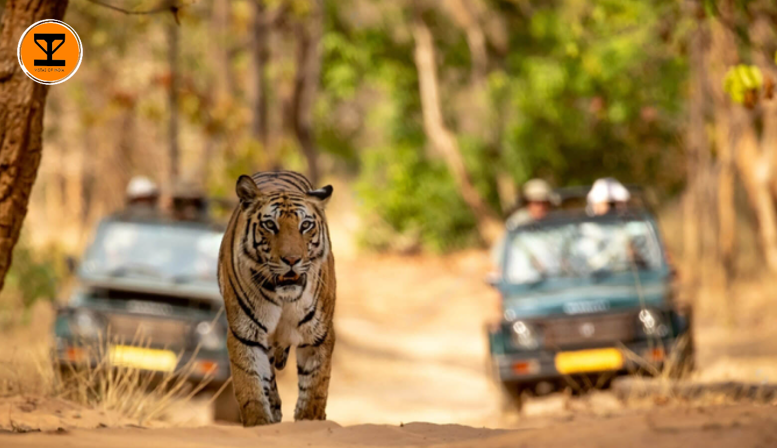
Katarniyaghat Wildlife Sanctuary is an essential part of Dudhwa Tiger Reserve in Lakhimpur Kheri, Uttar Pradesh. It covers an area of 400.09 sq.km. and plays a vital role in the reserve. Additionally, there is a buffer region of 150.03 sq.km., primarily located within the Motipur and Kakrha ranges.
The sanctuary boasts a variety of landscapes, such as sal forests, tall grasslands, and riparian ecosystems along the Girwa and Kaudiyala streams of the Ghaghra river. This sanctuary is a haven for numerous endangered species of mammals, plants, and avifauna, making it a biodiversity hotspot.
Conclusion
In conclusion, the establishment of a wildlife sanctuary in Uttar Pradesh offers immense potential for tourism. With its rich biodiversity, including endangered species such as tigers, elephants, and rare avian species, the sanctuary promises captivating experiences for nature enthusiasts and wildlife aficionados.
Visitors can engage in eco-friendly activities like guided safaris, bird watching, and nature walks, fostering conservation awareness and sustainable tourism practices. Moreover, the sanctuary’s strategic location and accessible infrastructure make it an attractive destination for both domestic and international tourists. By promoting wildlife conservation and providing memorable experiences, this sanctuary stands as a beacon for responsible tourism, ensuring the preservation of natural heritage for generations to come.
Frequently Asked Questions
A wildlife sanctuary is a protected area where wildlife, flora, and fauna are given legal protection from human activities such as hunting, poaching, and habitat destruction. These areas are dedicated to preserving biodiversity and providing a safe habitat for various species to thrive.
Uttar Pradesh is home to several wildlife sanctuaries, with a total of around 25 officially recognized sanctuaries. Some notable ones include Dudhwa National Park, Chandra Prabha Wildlife Sanctuary, Katarniaghat Wildlife Sanctuary, and Nawabganj Bird Sanctuary.
Uttar Pradesh’s wildlife sanctuaries boast a diverse range of fauna including Bengal tigers, Indian elephants, leopards, deer species such as sambar and spotted deer, sloth bears, various species of birds including migratory ones, reptiles like gharials and marsh crocodiles, and numerous species of butterflies and insects.
Yes, many of Uttar Pradesh’s wildlife sanctuaries offer opportunities for eco-tourism activities such as safaris, birdwatching tours, nature walks, and camping. These activities are usually conducted under the supervision of trained guides and officials to ensure minimal disturbance to the wildlife and their habitats.
The Uttar Pradesh Forest Department plays a crucial role in the protection and conservation of wildlife in the state’s sanctuaries. They implement various conservation measures such as anti-poaching patrols, habitat restoration, community involvement programs, and wildlife research initiatives. Additionally, stringent laws and regulations are enforced to combat illegal activities like poaching and habitat destruction.

Welcome to vistasofindia.com, where we transform your travel dreams into a reality by guiding you through the diverse and enchanting landscapes of India. We understand that every traveler seeks a unique experience, and with our in-depth guides and insider tips, we ensure that your journey is not just a trip but a memory to cherish.

Start Your Journey Now!
Begin your exploration of India today with vistasofindia.com. Discover detailed information about key destinations, plan your itinerary efficiently, and get ready for an unforgettable adventure. Whether you’re a history enthusiast, a festival lover, or a foodie, India has something extraordinary for you.

Let us be your ultimate travel companion for exploring India! With our in-depth information on every corner of the country, you can create a personalized itinerary that suits your interests. Don’t wait any longer – start exploring and get ready to experience the magic of India firsthand!
